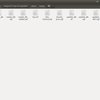Script for installation of tango 9.2.5 on fresh Ubuntu 16.10 machine
|
|
|
|---|---|
|
Hi all, I have prepared a fully automated script for installing tango and related software packages (mysql, java, zmq+omniORB+tango) on Ubuntu 16.10 machine. It also has codes that automatically set the MYSQL_USER and MYSQL_PASSWORD environment variables. Whole process took about 55-60 mins. Please have a look and let me know if any thing could be added / improvised. Code hosted at: Tango installation script AstroBlogWeb |
|
|
|
|
|---|---|
|
And what about ? apt-get install mysql-server apt-get install tango-db does it works on Ubuntu 16.10 ? |
|
|
|
|
|---|---|
|
1. Installation of mysql-server and mysql-client are already included in the script. 2. A folder is created inside TANGO_INSTALLED_FOLDER/share/tango/db with the related files (image attached). I am a newbie to both tango and to mysql. So, I am not sure if this is okay or am i missing something. 3. Yes it works on Ubuntu 16.10 Will try to run a sample code from the tutorials and see if this has been configured correctly. |
|
|
|
|
|---|---|
|
What I wanted to explain is that tango (excepted the java part) is already available on Debian/Ubuntu/Mint… with a simple apt-get install tango-db tango-starter python-pytango But maybe you are trying to do something different than installing tango on your system. Cheers Frederic |
|
|
|
|
|---|---|
|
Aren't the available Debian packages for tango 9.2.2 |
|
|
|
|
|---|---|
|
Hi Astroblogweb, Really great job. I want you to ask this. In the code you wrote LIBVALUE=$"/home/$USER/tangocs/tango-$tangoVersion-gcc-$gccVersion-gstabs+/lib" LIBVALUE="$LIBVALUE:$LD_LIBRARY_PATH" echo "export LD_LIBRARY_PATH=$LIBVALUE" >> ~/.bashrc What is LD_LIBRARY_PATH in the second row of code? |
|
|
|
|
|---|---|
|
another solution in order to test 9.2.5a is to backport the package already available for Ubuntu 17.04 usually the procesdure is as simple as add the 17.04 deb-src line in /etc/apt/sources.list then a root apt-get update apt-get build-dep tango as normal user apt-get source -b tango then you can install the generated packages the extra bonus with this method is: packaging take care of the database upgrade during the installation. Cheers |
|

